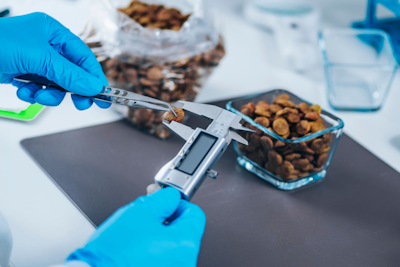In this article, you'll gain insights into the following topics:
(click to reach to the section directly)
A nutritious diet is meaningful only if it can be fully consumed
When selecting a diet for your beloved pet, we first make sure that the product is under good quality control. Next, we check on the nutritional content. Once the diet meets the standards of these aspects, we then test about its palatability. Many owners overlook the importance of palatability, but this would be the primary factor to determine our pet’s desire to eat. Food like carrots, green peppers and mushrooms contain high nutritional value, however, kids cannot obtain anything if they refuse to eat them.
Understanding your pet’s physiological structure is the key to capturing their taste buds
Why do some pets have a strong preference for certain types of food while showing completely no interest to others? Some pet owners even reckon that palatability is about adding grease and strong flavour so as to make the diet more favourable for cats and dogs. In fact, if you try to understand the physiological structure of cats and dogs, you will realize that palatability is not just about being “tasty”, many crucial factors including aroma, taste, texture, size and shape all play a significant role.
Dull taste buds + powerful sense of smell = the significance of aroma!
Humans rely on approximately 9,000 taste buds to determine whether they like a particular food, they also allow us to distinguish between the sweetness, sourness, bitterness, and spiciness in food. However, it is not the case for cats and dogs. Dogs possess 1,700 taste buds while cats have only 470, and dogs are able to detect sweetness while cats cannot. On the contrary, humans possess only 5 million olfactory cells, whereas dogs have around 125-220 million, and cats have approximately 200 million. This explains why your furry friends always sniff their food before eating; for them, “smelling good” is everything. /p>
Sensitive oral sensations + varying lower jaw structures = palatability, texture and size matter!
Cats and dogs actually have their own preferences for food texture, some prefer a crunchy, crispy texture, while some enjoy chewy meat chunks. The palatability and texture of a pet diet definitely influence how pets choose their food.Besides, different dog breeds (from small breeds like Chihuahuas to large breeds like Golden Retrievers) develop their unique eating habits upon different mouth size and lower jaw structure, resulting in a variety of size and shape of kibbles.

Among all the pet food brands on the market, Royal Canin has been collaborating with veterinarians, nutritionists and research institutions all along.. With extensive experience and wealth of data, Royal Canin recognized early on that “palatability” as one of the key factors in pet food manufacturing. In addition to maintaining strict quality control and production management, Royal Canin conducts tasting tests with cats and dogs, aiming to provide products with formulas and aromas tailored for pets of different ages, sizes, breeds, lifestyles, and specific health conditions.
Along with the common dry kibble for cats and dogs, Royal Canin also offers wet food, canned food and liquid diets, providing pet owners with a wider range of choices. If we eliminate factors such as illness (both physical and psychological) that can cause a decrease in appetite, change in food type (from wet to dry), excessive consumption causing lack of desire to eat, eating too much other than main diet (snacks and fruits), frequent distractions during meal time, and your pet still refuses to eat even a single bite, it is very likely that the diet does not meet the minimum standard of palatability.

The ultimate reason for feeding animals is to provide them with essential energy and nutrients, which could only be achieved if the animals are willing to consume the food. In that case, do you still believe that palatability is not important?
